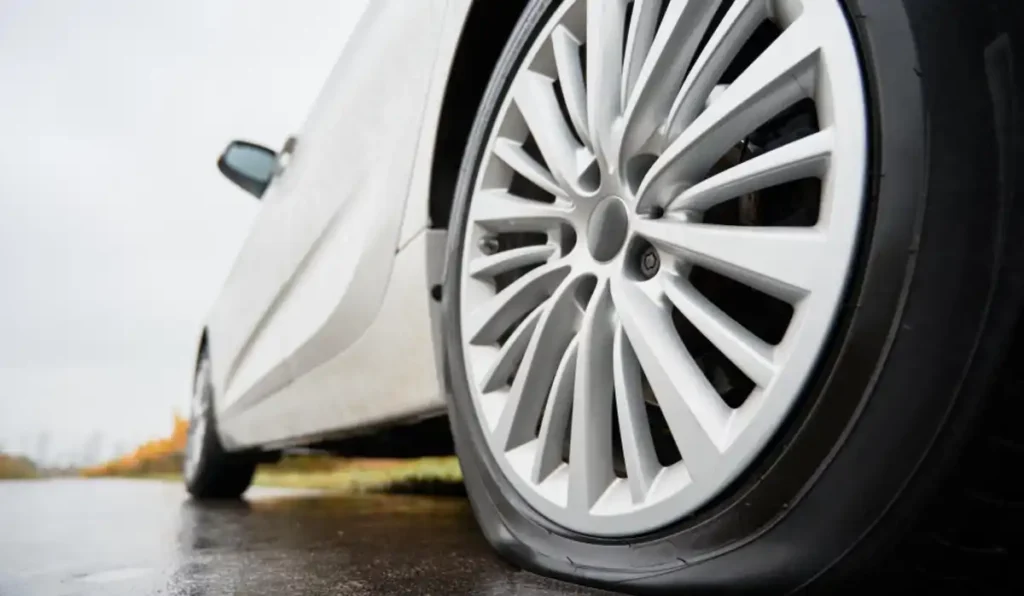Ever found yourself stranded with a flat tire and no help nearby? It’s a frustrating experience that can happen to any driver. But what if you knew exactly how to change that flat tire on your own, without needing roadside assistance? Changing a flat tire may seem intimidating, but it’s a simple task that can save you time, stress, and money. In this guide, we’ll walk you through everything you need to know about how to change a flat tire quickly and easily, even if you’ve never done it before.
Why Is It Important to Know How to Change a Flat Tire?
Understanding how to change a flat tire is an essential car maintenance skill. While having a roadside assistance plan is great, you won’t always have the luxury of waiting for help—especially in remote areas or during bad weather. By learning this skill, you’ll be prepared for unexpected flat tires, keeping you safe and saving you from being stranded. Plus, you’ll feel more confident on the road, knowing you can handle this common issue.
What You’ll Need: Tools for Changing a Flat Tire

Before you can change a flat tire, make sure you have the right tools in your car. These tools are essential for a smooth and quick tire change.
- Spare tire (Ensure it’s properly inflated)
- Car jack
- Lug wrench
- Wheel wedges or blocks
- Owner’s manual (for reference)
- Gloves and flashlight (optional but helpful)
Step-by-Step Guide: How to Change a Flat Tire
Now, let’s get to the good part—changing the flat tire. We’ll break it down into easy-to-follow steps to help you confidently tackle the task.
1. Find a Safe Location
Safety first! If your tire goes flat while driving, find a safe spot to pull over. Make sure it’s away from traffic, on a level surface, and well-lit if it’s dark. Avoid stopping on curves or near hills. Turn on your hazard lights to alert other drivers.
2. Apply the Parking Brake and Use Wheel Wedges
Once you’re parked, apply your parking brake to prevent the car from rolling. If you have wheel wedges, place them behind or in front of the tires opposite the flat to secure the car. This is especially important if you’re on a slight incline.
3. Loosen the Lug Nuts
Using your lug wrench, loosen the lug nuts on the flat tire, but don’t remove them yet. Loosen them by turning counterclockwise. Some cars have wheel covers that need to be removed before accessing the lug nuts. Refer to your car’s manual if needed.
Pro Tip: If the lug nuts are too tight, try standing on the wrench handle for leverage, but be careful to avoid injury.
4. Raise the Car with the Jack
Place the car jack under your vehicle in the recommended spot, usually located on the car’s frame near the tire. Refer to your owner’s manual for the exact spot. Slowly raise the car until the flat tire is about 6 inches off the ground.
Important Safety Note: Never place any part of your body under the car while it’s raised. The jack can fail if used improperly.
5. Remove the Flat Tire
Now that the car is lifted, completely remove the loosened lug nuts and set them aside in a safe place. Carefully pull the flat tire off the hub, using both hands to slide it straight out. Set the flat tire aside.
6. Mount the Spare Tire
Take your spare tire and align it with the lug bolts. Once it’s lined up, push it onto the hub until it’s fully seated. Replace the lug nuts and hand-tighten them in place, but don’t fully tighten them just yet.
7. Lower the Car and Tighten the Lug Nuts
Using the jack, lower the car until the spare tire touches the ground but the full weight of the car isn’t on it. Now, tighten the lug nuts with the lug wrench in a star pattern. This means tightening one nut, then moving across to the next, to ensure even pressure.
8. Lower the Car Completely
Once the lug nuts are tightened, lower the car completely to the ground and remove the jack. Tighten the lug nuts again to ensure they’re secure. You can now put away your tools and the flat tire.
Post-Tire Change: Important Final Steps
Now that your spare tire is on, you’re ready to hit the road—but not for long. Spare tires are typically temporary and should not be driven on for extended distances or at high speeds. Here’s what you should do after changing the tire:
- Drive Carefully to a Tire Shop: Spare tires are meant for short-term use. Head to the nearest tire shop to repair or replace your flat tire.
- Check the Spare Tire Pressure: If your spare tire isn’t properly inflated, it could fail quickly. Always check its pressure before driving away.
- Replace or Repair the Flat Tire ASAP: Get your flat tire fixed or buy a new one. Driving on a spare for too long can be unsafe.
Common Mistakes to Avoid When Changing a Flat Tire

Even if you follow the steps perfectly, there are some common mistakes that can turn a simple tire change into a frustrating experience. Here are a few things to avoid:
- Not Loosening the Lug Nuts First: Trying to remove a tire without loosening the lug nuts beforehand will make the job much harder.
- Placing the Jack in the Wrong Spot: Incorrect jack placement can damage your car’s frame or even cause the car to fall.
- Not Tightening the Lug Nuts Properly: Loose lug nuts can cause the tire to wobble or even fall off while driving.
- Forgetting to Check the Spare Tire: A flat or underinflated spare tire is just as bad as a flat tire, so always check it regularly.
FAQs: Flat Tire Changing
Q: Can I change a flat tire by myself?
A: Absolutely! With the right tools and guidance, changing a flat tire is a straightforward DIY car maintenance task. Just follow the steps above.
Q: How long does it take to change a flat tire?
A: It typically takes about 15-30 minutes, depending on your experience. First-timers might take a bit longer, but practice makes perfect.
Q: How often should I check my spare tire?
A: Check your spare tire’s pressure every time you check your other tires—usually once a month. You don’t want to discover a flat spare when you need it the most.
Q: Is it safe to drive on a spare tire?
A: Temporary spare tires are safe for short distances and at speeds of up to 50 mph. However, you should replace or repair your flat tire as soon as possible.
Safety Tips for Changing a Flat Tire
Changing a flat tire is relatively safe, but there are some important precautions to keep in mind:
- Always change the tire on a flat surface. This prevents the car from rolling.
- Avoid high-traffic areas when pulling over. If you can’t find a safe place, call for roadside assistance.
- Use reflective markers or flares if you’re on the side of the road at night to alert other drivers.
Conclusion
Knowing how to change a flat tire is one of the most valuable DIY car maintenance skills you can have. Not only does it save you from being stranded, but it also saves money by avoiding the need for a tow or service call. With this quick guide, you’re now equipped to handle a flat tire efficiently and safely.
So, next time you hear that dreaded thumping noise or see your tire pressure warning light, don’t panic. You’ve got this!








